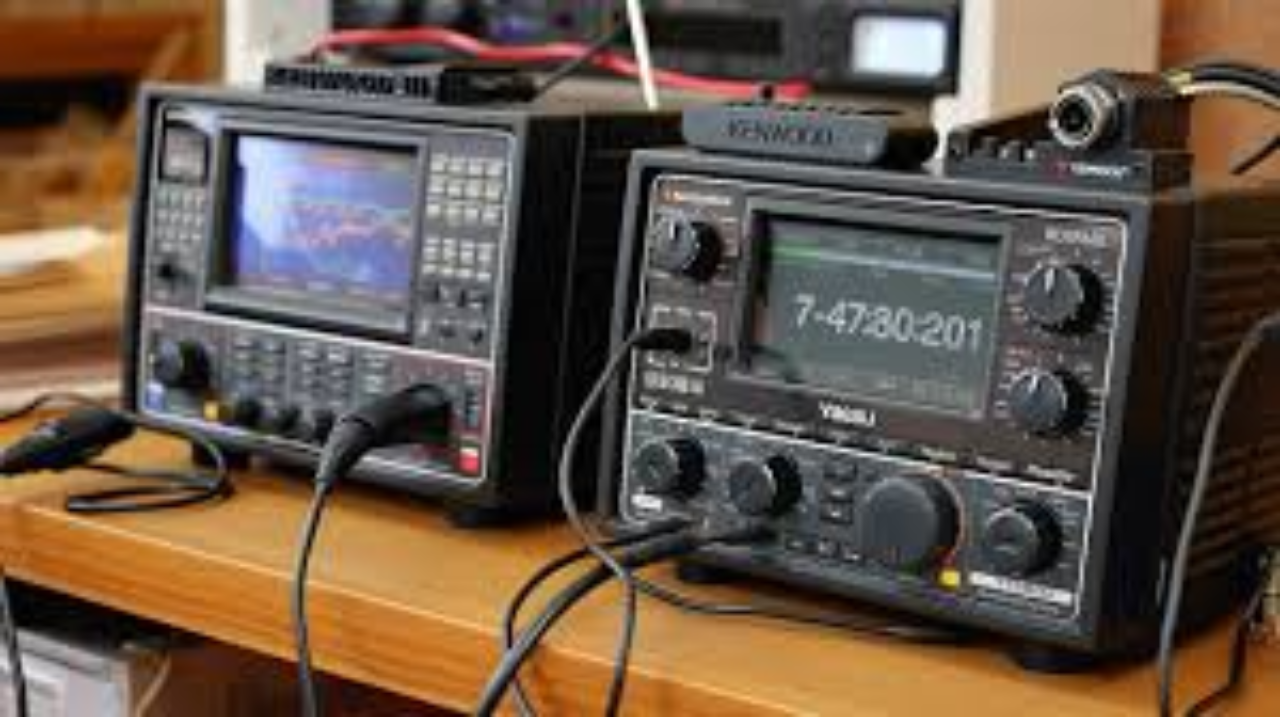TECH
Kenwood TS2000 vs Yaesu FRG 7700 – Decades Apart, Still Relevant

The world of amateur radio has evolved drastically, but some radios remain timeless. Two such names consistently pop up in conversations among HAM enthusiasts—the Kenwood TS2000 vs Yaesu FRG 7700. Despite being decades apart in design and technology, both transceivers still hold relevance in their own unique ways.
Whether you’re contemplating a second-hand purchase, considering an upgrade, or simply interested in a nostalgic comparison of these iconic devices, this guide will explore the features, advantages, and differences between the Kenwood TS2000 and Yaesu FRG 7700. Let’s break it down.
The Kenwood TS2000: A Modern All-Band Transceiver
Released in the early 2000s, the Kenwood TS2000 is affectionately referred to as “The Shack in a Box.” It offers versatility and functionality packed into a single radio, making it an excellent option for both casual and seasoned HAM operators.
Why the Kenwood TS2000 Still Shines
Even two decades after its release, the TS2000 continues to serve as a reliable tool for amateurs in the field. Key features that make this transceiver stand out include:
1. All-Band Coverage
The TS2000 supports operating frequencies from HF, 50 MHz (6 meters), VHF (2 meters), up to UHF (70 cm). This wide range makes it a one-stop solution for those who want to experiment with multiple bands without additional equipment.
2. 100W Output Power
It delivers a strong 100W output on HF and 6 meters, ensuring consistent communication even over longer distances.
3. Built-In TNC for APRS
The TS2000 comes with a built-in Terminal Node Controller (TNC) for Amateur Packet Reporting System (APRS), which allows users to exchange digital messages in a local network, a feature still valued in emergencies.
4. Satellite Communication
Uniquely, the TS2000 excels at satellite communication, a rarity in most radios of its time. Thanks to its full duplex capability, it enables smooth cross-band operation.
5. Built-In DSP
The Digital Signal Processing (DSP) helps reduce unwanted noise and improves signal clarity, ensuring an enjoyable operating experience for HAMs.
6. User-Friendly Interface
While the front panel may appear overwhelming at first glance, the logical layout of the controls makes it easy to operate. The multifunction knobs and dedicated settings for filters, modes, and memories add to its convenience.
Limitations of the Kenwood TS2000
Of course, no transceiver is without its drawbacks. HAMs often note that, compared to newer rigs, the TS2000 lacks the modern SDR (Software-Defined Radio) capabilities and ultra-advanced signal filtering found in contemporary radios. However, it remains a dependable workhorse that continues to divide opinions in enthusiast circles.
The Yaesu FRG 7700: Nostalgia Meets Reliability
Fast-travel back to the late 1970s, the Yaesu FRG 7700 was born in an era of increasing interest in shortwave listening. Known affectionately as “The Frog,” this receiver is a true classic and continues to command respect among vintage-radio lovers.
What Makes the Yaesu FRG 7700 Timeless?
Though designed as a general coverage receiver rather than an all-band transceiver, the FRG 7700 packs tons of features that thrill shortwave and HAM radio listeners.
1. Full Coverage of 150 kHz to 30 MHz
The FRG 7700’s full coverage across HF frequencies is ideal for picking up international broadcasts, amateur bands, utility stations, and more.
2. Exceptional Audio Clarity
Equipped with analog filtering and clever circuitry, the FRG 7700 delivers excellent audio clarity—a standout quality when compared to some modern SDR receivers.
3. DDS Digital Readout
For its time, the digital frequency readout was revolutionary. Owners of the FRG 7700 were given a serious edge in accuracy compared to analog-only competitors.
4. Customizable Options
Yaesu provided several add-ons for the FRG 7700, such as an optional memory unit (FRV-7700) or a synthesizer (FRT-7700), which allowed it to be paired with transmitters for amateur operation.
5. Built to Last
The design and build quality of the FRG 7700 are simply unbeatable. Many units in circulation today still function perfectly, a testament to its durability.
Drawbacks of the Yaesu FRG 7700
Being a product of its time, the FRG 7700 lacks features like automatic noise cancelers (ANC) or digital processing. Its analog design, beautiful as it may be for some, may feel limiting when compared to modern digital receivers.
Kenwood TS2000 vs Yaesu FRG 7700: How Do They Compare?
|
Feature |
Kenwood TS2000 |
Yaesu FRG 7700 |
|---|---|---|
|
Year Released |
2000s |
Late 1970s |
|
Type |
All-band Transceiver |
General Coverage Receiver |
|
Frequency Coverage |
HF, 6m, 2m, UHF |
150 kHz – 30 MHz |
|
Output Power |
100W (HF, 6M) |
N/A (Receiver only) |
|
DSP |
Yes |
No |
|
Satellite Support |
Yes |
No |
|
Build Quality |
Durable |
Outstanding |
|
Modern Features |
Built-in APRS, TNC, Satellite ops |
None (Vintage) |
Key Takeaway
The Kenwood TS2000 is clearly suited for the modern operator seeking an all-in-one machine for diverse activities, while the Yaesu FRG 7700 appeals to purists who value a high-quality shortwave receiver.
Why These Radios Are Still Relevant
Despite technological leaps, the Kenwood TS2000 and Yaesu FRG 7700 remain highly respected in HAM communities. Their endurance and quality build speak volumes.
Here’s why they are still relevant today:
- For Vintage Lovers: The FRG 7700 is a collector’s dream, offering a unique glimpse into radio history.
- Practical Today: The TS2000’s versatility and confidence in multiple bands make it an enduring option for experimenters and operators.
- Affordability: Second-hand markets for both radios offer value compared to modern alternatives.
If you’re a HAM enthusiast or radio collector, investing in either of these devices adds not just functionality but also history to your collection.
Which One Should You Choose?
- Choose the Kenwood TS2000 if you’re a general operator who values versatility, cutting-edge (though not the newest) technology, and modern convenience.
- Go for the Yaesu FRG 7700 if you’re a shortwave enthusiast with a love for analog nostalgia and impeccable build quality.
Whatever your choice, both radios bring something unique to the table, proving that no matter the technology gap, some equipment never goes out of style.
TECH
Unveiling Trurimesu: A Modern Italian Dessert Twist

Trurimesu is a beloved classic that has long captivated the hearts (and taste buds) of dessert lovers around the world. Its layers of coffee-soaked ladyfingers, creamy mascarpone, and a dusting of cocoa bring indulgence to every bite. But now, there’s a modern twist on this traditional favorite that’s taking the culinary world by storm: Trurimesu.
What exactly is Trurimesu? How does it differ from the classic tiramisu? And why is it sparking so much excitement among foodies? This blog explores the birth of Trurimesu, its key flavors, and how you can bring this contemporary Italian dessert masterpiece into your own kitchen.
What Is Trurimesu?
Imagine everything you love about tiramisu but elevated with a modern, innovative flair. Trurimesu reimagines the traditional dessert by incorporating unexpected ingredients, fresh presentation styles, and creative twists that cater to a broader palate. While it maintains its essence as a layered, creamy dessert, it swaps out or enhances certain elements for a completely new sensory experience.
What defines Trurimesu isn’t just one recipe; it’s the spirit of reinvention. Think of it as the “next generation” of tiramisu, balancing tradition with creativity.
The Key Innovations of Trurimesu
Let’s break down the unique twists that make Trurimesu so alluring.
1. Ingredient Upgrades
Trurimesu retains the foundational elements of mascarpone cream, a sponge or biscuit layer, and a signature flavor profile. However, it introduces refined or bold ingredient choices that raise the flavor game.
- Alternative Sweeteners: Instead of granulated sugar, you may find ingredients like honey, coconut sugar, or even maple syrup in Trurimesu recipes, giving it a more complex sweetness.
- Flavor Infusions: Classic tiramisu uses coffee and cocoa as its defining flavors. Trurimesu adds new profiles such as matcha, pistachio, berry compotes, or hazelnut praline. For adults, boozy layers might include amaretto, limoncello, or spiced rum.
- Health-Conscious Twists: Trurimesu also caters to modern dietary preferences. For example, it might feature gluten-free biscuits, dairy-free mascarpone alternatives, or reduced-sugar options.
2. Reimagined Presentation Styles
Typically, tiramisu is served as a rectangular slice or layered in a pan. Trurimesu, however, embraces playful and chic presentations:
- Individual Portions: Served in small jars, glasses, or mini bowls, Trurimesu elevates itself as a high-end plated dessert fit for any occasion.
- Layering Techniques: Some versions use piped mascarpone cream for a textured, elegant finish. Others experiment with visible swirl patterns or geometric designs between layers.
- Garnishes: Beyond a simple dusting of cocoa, Trurimesu might be topped with candied nuts, edible flowers, or artisanal chocolate shavings for added sophistication.
3. Cultural Crossovers
Trurimesu embraces global culinary influences. For example:
- Asian-Inspired Trurimesu: Matcha powder, black sesame, or yuzu lend a light and tangy twist.
- Tropical Trurimesu: Layers of mango puree, coconut mascarpone, and rum transport you to the beaches of paradise.
- Nutty Variations: Italian pistachios, almond paste, or hazelnut crème add richness and depth for nut lovers.
Why Is Trurimesu Trending?
Trurimesu has captured the imagination of pastry chefs and home bakers alike. Here’s why it’s become such a hot topic:
1. Blending Tradition with Innovation
Modern diners crave creative updates to classic comfort foods. Trurimesu respects the rich history of tiramisu while adding fresh perspectives, making it a dessert that honors the past without staying static.
2. Social Media Appeal
The visual appeal of Trurimesu is undeniable. Its vibrant layers, artful garnishes, and creative designs make it an Instagram sensation. The hashtag #Trurimesu has seen growing traction with stunning photos and videos of this modern treat.
3. Customization for Dietary Trends
More people seek personalized and health-conscious dessert options. Trurimesu’s makes classic tiramisu accessible to vegans, gluten-free eaters, and those looking to cut down on sugar without sacrificing flavor.
4. Restaurant & Bakery Menus
High-end restaurants and boutique bakeries have adopted Trurimesu’s as a signature dessert, further boosting its credibility and allure in culinary circles.
How to Make Trurimesu at Home
Love the sound of Trurimesu’s and want to try it for yourself? Here’s how you can replicate this modern dessert twist in your own kitchen.
Ingredients:
For a matcha-inspired Trurimesu (serves 4):
- 200g ladyfingers or gluten-free sponge biscuits
- 250g mascarpone cheese (use a plant-based option for dairy-free)
- 100ml heavy cream or coconut cream
- 2 tbsp matcha powder
- 3 tbsp honey or maple syrup
- 1 cup brewed green tea (cooled)
Instructions:
- Prepare the Cream Base:
-
-
- Whisk the mascarpone, heavy cream, matcha powder, and your sweetener of choice until smooth and fluffy.
-
- Dip the Biscuits:
-
-
- Briefly dip ladyfingers into the green tea, ensuring they don’t get too soggy.
-
- Layer It Up:
-
-
- Alternate layers of matcha cream and dipped biscuits in a glass or serving dish. Start and finish with the cream.
-
- Garnish:
-
-
- Dust the top with matcha powder and add a dollop of cream or fresh fruit.
-
- Chill & Serve:
-
-
- Refrigerate for at least 4 hours (or overnight) to let the layers set.
-
The result? A stunning, modern take on tiramisu that’s as fun to make as it is to eat.
Where to Find Trurimesu
If you’re not ready to make it at home just yet, don’t worry. Many cafés and dessert shops now offer Trurimesu’s with regional and seasonal twists. Seek out artisanal bakeries or Italian-fusion eateries to explore professional takes on this innovative dessert.
You can also check artisan dessert subscription services that deliver modern twists on classic favorites, allowing you to taste a variety of Trurimesu’s styles without leaving your home.
Modernizing Tradition on Your Plate
Trurimesu proves that even the most iconic desserts have room for evolution. By blending creativity, global influences, and dietary inclusivity, it transforms a classic into something exciting and fresh. Whether you’re savoring it at a local café or whipping up your own batch at home, Trurimesu’s is a modern culinary masterpiece worth celebrating.
Why stop at just reading about it? Get inspired, head to your kitchen and give Trurimesu’s a try. You might just stumble upon your own signature twist!
TECH
SpyDialer: An Overview of Its Features, Uses, & Legal Implications

Curious about who’s calling or need to verify information tied to a phone number? SpyDialer is one of several tools designed to help you uncover details connected to phone numbers. From identifying unknown callers to verifying email addresses, SpyDialer offers a range of features that might save you time and help you connect some dots.
But there’s more to consider beyond its capabilities. This blog will explore SpyDialer’s key features, use cases, and its larger legal and ethical implications. By the end, you’ll have a full understanding of what SpyDialer can (and cannot) do and whether it’s the right tool for your needs.
What is SpyDialer?
SpyDialer is a reverse phone lookup tool that provides personal information about phone numbers tailored for individuals, businesses, and curious users alike. Developed to aid users in identifying unknown calls, verifying email addresses, or even cross-referencing personal details, SpyDialer distinguishes itself with a unique voice mail-dialing feature.
Unlike most similar platforms, SpyDialer allows users to “voicemail drop” a call to the number in question without informing or calling the recipient. This feature is innovative, but its ethical implications are something to consider carefully.
Key Features of SpyDialer
SpyDialer offers a variety of functionalities aimed at helping individuals gather information. Below are some of its standout features.
1. Reverse Phone Lookup
Have an unknown number showing up on your screen? SpyDialer allows you to input that number and acquire details about its owner(s). The tool scours publicly available databases to provide names, potential addresses, and even social profiles associated with the number. It supports both landline and cell phone numbers, bringing versatility to its use.
2. Voicemail Listening Feature
Perhaps SpyDialer’s most intriguing feature is its ability to directly access a phone’s voicemail without actually engaging the recipient. This “voicemail drop” function means users can listen to recorded messages anonymously, provided the voicemail system is not password-protected.
3. Email Address Search
Phone numbers aren’t the only things SpyDialer can investigate. The platform allows users to search email addresses to uncover further information, such as associated individuals or business records.
4. People Search
SpyDialer’s people search feature expands its capabilities, enabling users to find personal information via a name or address. Users can locate addresses, phone numbers, and potentially even relatives of the person in question.
How Do People Use SpyDialer?
SpyDialer is more than just a way to identify missed calls or filter out spam. Its features serve various purposes in both personal and professional contexts.
1. Screening Unknown Callers
One of the most common uses of SpyDialer is to uncover the identity behind unknown calls or texts. For individuals worried about spam or scam calls, SpyDialer’s reverse lookup feature offers clarity.
2. Reconnecting with People
Lost touch with someone and all you have is an old number or email address? SpyDialer may help trace the contact details you need, particularly when combined with its people search feature.
3. Verifying Online Transactions
For businesses or buyers engaging in online or peer-to-peer transactions, SpyDialer helps verify that the phone number associated with an individual is legitimate.
4. Background Verification
Though it’s not a replacement for a professional background check, SpyDialer’s tools are often used to vet individuals for casual purposes like renting out property, screening potential roommates, or informal hiring.
Legal & Ethical Implications of Using SpyDialer
While SpyDialer offers valuable functionalities, users should be aware of the legal and ethical concerns attached to its use. Using personal information comes with responsibilities, and understanding what’s permitted by law is critical. Below, we dissect some of the core considerations.
1. Data Privacy and Consent
SpyDialer relies on public records to fetch information, meaning it doesn’t typically access confidential databases. However, the voicemail-dialing capability touches on potentially sensitive ground. Listening to someone’s private voicemail without their consent may not only lead to ethical issues but could also breach privacy laws depending on your jurisdiction.
2. Compliance with FCRA
If you’re planning to use SpyDialer for employment or tenancy screening, keep in mind that it does not comply with the Fair Credit Reporting Act (FCRA). This U.S. law outlines strict rules for using personal consumer data, and SpyDialer does not qualify as a FCRA-certified source. Misusing information for any prohibited purpose could result in legal penalties.
3. Is It Legal in Your Region?
The legality of reverse lookup tools like SpyDialer varies globally. While it may be permissible in certain countries, others may have strict regulations protecting personal data. Always check the laws relevant to your area before using it.
4. Ethical Concerns
Even when laws are not being broken, ethical considerations matter. The ability to anonymously listen to voicemails or access personal data raises questions about the boundaries of acceptable behavior. Users must weigh their intentions against the potential invasion of privacy.
Advantages & Disadvantages of SpyDialer
Before deciding whether to use this service, consider these pros and cons.
Advantages:
- Simple and user-friendly interface
- Offers unique voicemail listening capabilities
- Supports multiple types of searches (phone, email, or people)
- Free to use with optional premium features
Disadvantages:
- Ethical and privacy concerns regarding voicemail access
- Limited to publicly available data; results can be incomplete
- Not FCRA-compliant, limiting its professional use cases
- Legality varies depending on location
Alternatives to SpyDialer
If SpyDialer doesn’t fully meet your needs or raises legal/ethical concerns, there are several reputable alternatives to consider.
1. Truecaller
Truecaller specializes in identifying callers and blocking spam. While it focuses on improving call experiences, it doesn’t offer email or people search options.
2. BeenVerified
BeenVerified takes a broader approach, offering in-depth background checks that include phone numbers, emails, addresses, and even criminal history reports.
3. Whitepages
Perfect for simple reverse lookups, Whitepages makes it easy to verify phone numbers and basic details about someone’s identity.
4. Spokeo
Spokeo is a versatile tool that provides comprehensive information linked to phone numbers, people, and email addresses.
Each tool has its own strengths and weaknesses, so consider your specific needs and compare features carefully.
Is SpyDialer Right for You?
SpyDialer offers convenience for those looking for quick and straightforward access to public information tied to phone numbers and personal contact details. However, it’s not without its flaws. From concerns over privacy to jurisdictional legalities, using SpyDialer responsibly requires forethought and caution.
For professional users or those requiring detailed verified data, alternative platforms may better suit your requirements. For personal users simply wanting to identify strangers calling their phone, SpyDialer could be a simple, no-cost solution.
Are you exploring tools like SpyDialer to uncover quick insights, or are you looking for more in-depth solutions? Always weigh the potential risks before proceeding.
TECH
Microcomputing: The Future of Small-Scale Computing

From wearable devices to edge computing systems, microcomputing is revolutionizing the way we think about technology. Compact and powerful, it’s a field that is paving the way for breakthrough innovations across industries.
But what is microcomputing, and why does it hold so much promise for the future? This blog dives into the world of microcomputing, exploring what it is, how it’s being used, and why it’s driving such significant interest among developers, businesses, and researchers alike.
By the end of this article, you’ll have a clear understanding of microcomputing’s role in shaping our digital future and the industries it’s set to transform.
What is Microcomputing?
Microcomputing refers to the use of small-scale computing devices, often characterized by their compact size and powerful processing capabilities relative to their form factor. These devices are typically built around microprocessors or microcontrollers, enabling them to execute complex computations without the bulk of traditional systems. Examples include single-board computers like the Raspberry Pi, microcontrollers like Arduino, and embedded systems in IoT devices.
Unlike traditional computing systems, which might require dedicated infrastructure, microcomputing focuses on portability, efficiency, and integration with compact environments. It often serves as the backbone for consumer electronics, healthcare devices, industrial automation, and smart technologies.
Why Microcomputing is a Gamechanger
1. Portability Without Compromise
Microcomputing has achieved what was once thought impossible—packing significant processing power into tiny devices that can fit into your palm. This portability has profound implications. For instance:
- Engineers can deploy microcomputing systems in drones or robotics, enabling autonomous navigation and data processing on the go.
- Medical professionals now rely on compact health-monitoring devices such as glucose trackers or portable ECG systems built on microcomputing platforms.
The sheer convenience of pocket-sized yet capable devices opens doors in industries requiring accessibility and mobility.
2. Energy Efficiency
Many microcomputing’s devices are designed with low-power systems, making them ideal solutions for energy-sensitive applications. This efficiency is especially critical in IoT and remote systems where long-term operation is required without frequent battery changes or energy supplies.
For example, sensors powered by microcontrollers can operate in agricultural environments for months, collecting and transmitting data on soil quality without the need for daily maintenance.
3. Edge Computing Enablement
Edge computing focuses on processing data closer to its source rather than relying solely on centralized cloud systems. Microcomputing devices are instrumental in pushing forward this paradigm. By enabling real-time data analysis at the “edge,” microcomputing’s reduces latency, improves system performance, and enhances security when handling sensitive data.
- Smart factories leverage edge-enabled microcomputing for seamless production lines.
- Autonomous vehicles depend on microcomputing-based processors to react to their environments instantly.
Industries Revolutionized by Microcomputing
Education and Innovation
microcomputing’s tools like Raspberry Pi and Arduino are extremely popular in educational settings. These platforms allow students to learn programming, device prototyping, and electrical engineering in user-friendly, hands-on environments.
From simple LED circuits in classrooms to fully functional robots in workshops, microcomputing bridges the gap between theoretical learning and real-world application.
Healthcare
Wearable technology and medical-grade IoT devices have surged, thanks to microcomputing. Examples include wearables monitoring vitals (e.g., heart rate, sleep patterns) and implantable devices managing long-term conditions like diabetes.
microcomputing’s solutions can also power portable labs, revolutionizing how diagnostics are conducted in rural or under-served areas.
Agriculture
Precision agriculture has taken off with the advent of microcomputing’s . Farmers can now use systems embedded with microcontrollers to monitor crop health, track weather conditions, and automate irrigation systems.
For instance, microcontroller-based soil monitoring solutions have brought significant efficiencies to water management. This not only ensures healthier crop yields but also reduces resource wastage.
Consumer Tech
Smart technology is nothing without microcomputing’s . It enables everything from home assistants to wearable fitness trackers.
For example, platforms like Fitbit use compact microcomputing processors to track user activity while syncing data seamlessly with cloud services for insights.
Industrial Automation
Factories and industrial environments are also benefiting from increased efficiency via microcomputing. Embedded systems now regulate machines, minimize downtime, and even facilitate inspections through sensors and processing units in real time.
Challenges Ahead for Microcomputing
Despite its promise, microcomputing’s faces certain challenges, including:
- Resource Constraints: Smaller devices face limitations in memory and storage, which can make computation-intensive tasks more difficult.
- Thermal Management: Packing advanced performance into compact systems creates heat dissipation struggles that designers need to overcome.
- Security Concerns: With the proliferation of IoT and small-scale computing, ensuring endpoint security is more critical than ever to prevent cybersecurity risks.
Solving these challenges will require innovation in hardware design, enhanced security protocols, and advancements in software optimization.
What’s Next for Microcomputing?
With continued investment in R&D, microcomputing’s has the potential to redefine the boundaries of what’s possible in computing. Upcoming advancements include the integration of quantum-inspired processors into micro-devices, extreme miniaturization via nanotechnology, and exponential growth in edge AI capabilities.
For businesses, exploring microcomputing’s opportunities means staying ahead of the curve. By adopting microcomputing innovations early, organizations can gain a competitive advantage, reduce costs, and deliver cutting-edge solutions to their customers.
Take the Microcomputing Leap
Microcomputing represents more than just a smaller way of doing big things. It’s a whole new era of efficiency, accessibility, and opportunity. Whether you’re a startup exploring IoT devices or a large-scale enterprise looking to modernize operations, microcomputing opens doors to endless possibilities.
If microcomputing’s innovations excite you, it might be time to explore how your business can integrate them to stay ahead of the curve.
-

 HEALTH9 months ago
HEALTH9 months agoCVJC Health Equity Lab: Bridging Gaps in Healthcare Access
-

 NEWS9 months ago
NEWS9 months agoBestAdvise4U.com News: Your Ultimate Guide to Reliable Updates
-

 BLOG9 months ago
BLOG9 months agoNatural Relief in Tempe Arizona : Knee and Joint Care
-

 HEALTH9 months ago
HEALTH9 months agoLorphenadine: A Comprehensive Guide of its Uses and Benefits
-

 BLOG10 months ago
BLOG10 months ago6530-20-1 Metabolites: Modern Chemistry and Biotechnology
-

 LAW10 months ago
LAW10 months agoPhoenix Capital Group Lawsuit: Understanding the Legal Battle
-

 HEALTH9 months ago
HEALTH9 months agoChamagnga Multivitamins: Unlocking the Power of Complete Nutrition
-

 LAW9 months ago
LAW9 months agoCar Accident Lawyer By Mytechnicalhindi.com: Expert Legal Advice
